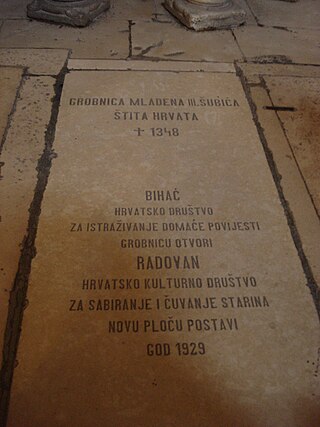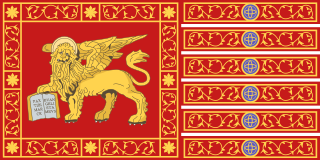
Electoral district IX ( Croatian: IX. izborna jedinica) is one of twelve electoral districts of Croatian Parliament.

Electoral district IX ( Croatian: IX. izborna jedinica) is one of twelve electoral districts of Croatian Parliament.

Electoral district IX consist of: [1]
Under 2023 revision district boundaries were redrawn according to suggestion of Constitutional Court to compel proportional number of voters.
New district consist of:
|
|
| ||||||||||||||||||||||||||||||||||||||||||||||||||||||||||||
|
|
| ||||||||||||||||||||||||||||||||||||||||||||||||||||||||||||||||||||||||||||||
|
|
| ||||||||||||||||||||||||||||||||||||||||||||||||||||||||||||
|
|
| ||||||||||||||||||||||||||||||||||||||||||||||||||||||||||||
| HDZ - HSS - HSP AS - BUZ - HSLS - HRAST - HDS - ZDS
| SDP - HNS - HSU - HL SR - A-HSS - ZS - SDSS
| ||||||||||||||||||||||||||||||||||||||||||||||||||||||||||||||||||
|
|
| ||||||||||||||||||||||||||||||||||||||||||||||||||||||||||||||||||
|
| SDP - HSS - HSU - SNAGA - GLAS - IDS - PGS
DP - HS - BLOK - HKS - HRAST - SU - ZL
| ||||||||||||||||||||||||||||||||||||||||||||||||||||||||||||||||||||||||

Dalmatia is one of the four historical regions of Croatia, alongside Central Croatia, Slavonia, and Istria, located on the east shore of the Adriatic Sea in Croatia.

The Kingdom of Croatia entered a personal union with the Kingdom of Hungary in 1102, after a period of rule of kings from the Trpimirović and Svetoslavić dynasties and a succession crisis following the death of king Demetrius Zvonimir. With the coronation of King Coloman of Hungary as "King of Croatia and Dalmatia" in 1102 in Biograd, the realm passed to the Árpád dynasty until 1301, when the (male) line of the dynasty died out. Then, kings from the Capetian House of Anjou, who were also cognatic descendants of the Árpád kings, ruled the kingdoms. Later centuries were characterized by conflicts with the Mongols, who sacked Zagreb in 1242, competition with Venice for control over Dalmatian coastal cities, and internal warfare among Croatian nobility. Various individuals emerged during the period, such as Paul I Šubić of Bribir, who was representing the most powerful Croatian dynasty at the time, the Šubić noble family. These powerful individuals were on occasion able to de facto secure great deal of independence for their fiefdoms. The Ottoman incursion into Europe in the 16th century significantly reduced Croatian territories and left the country weak and divided. After the death of Louis II in 1526 during the Battle of Mohács and a brief period of dynastic dispute, both crowns passed to the Austrian House of Habsburg, and the realms became part of the Habsburg monarchy.

Solin is a town and a suburb of Split, in Split-Dalmatia county, Croatia. It is situated right northeast of Split, on the Adriatic Sea and the river Jadro.

Vrlika is a small town in inland Split-Dalmatia County, Croatia. The closest large towns are Sinj, Knin, and Drniš. Vrlika was given the status of town in 1997. Vrlika is an underdeveloped municipality which is statistically classified as the First Category Area of Special State Concern by the Government of Croatia.

Čiovo is an island located off the Adriatic coast in Croatia with an area of 28.8 square kilometres (11.1 sq mi), population of 5,908 inhabitants (2011). Its highest peak is the 218 m Rudine.
The History of Dalmatia concerns the history of the area that covers eastern coast of the Adriatic Sea and its inland regions, from the 2nd century BC up to the present day. The region was populated by Illyrian tribes around 1,000 B.C, including the Delmatae, who formed a kingdom and for whom the province is named. Later it was conquered by Rome, thus becoming the province of Dalmatia, part of the Roman Empire. Dalmatia was ravaged by barbaric tribes in the beginning of the 4th century.
Paul I Šubić of Bribir was Ban of Croatia between 1275 and 1312, and Lord of Bosnia from 1299 to 1312. As the oldest son of Stephen II of the Šubić noble family, he inherited the title of count of Bribir. He was appointed ban in 1273. He was relieved from duty in 1274, following his involvement in disputes between the Dalmatian coastal cities of Trogir and Split, and was returned to office in 1275.
The subdivisions of Croatia on the first level are the 20 counties and one city-county.

The Dalmatian Hinterland is the southern inland hinterland in the historical Croatian region of Dalmatia. The name zagora means 'beyond (the) hills', which is a reference to the fact that it is the part of Dalmatia that is not coastal and the existence of the concordant coastline where hills run parallel to the coast.

Municipalities in Croatia are the second-lowest administrative unit of government in the country, and along with cities and towns they form the second level of administrative subdisivion, after counties. Each municipality consists of one or more settlements (naselja), which are the third-level spatial units of Croatia.

Dugopolje is a village and a municipality in Croatia in the Split-Dalmatia County.
The Battle of Zadar was a military engagement between the Yugoslav People's Army, supported by the Croatian Serb Serbian Autonomous Oblast of Krajina, and the Croatian National Guard, supported by the Croatian Police. The battle was fought north and east of the city of Zadar, Croatia, in the second half of September and early October 1991 during the Croatian War of Independence. Although the JNA's initial orders were to lift the Croatian siege of the JNA's barracks in the city and isolate the region of Dalmatia from the rest of Croatia, the orders were amended during the battle to include capturing the Port of Zadar in the city centre. The JNA's advance was supported by the Yugoslav Air Force and Navy.

The Jadro is a watercourse in Dalmatia, Croatia, that discharges into the Adriatic Sea. The upper reaches of the Jadro River, as well as its source, Jadro Spring, are protected as an ichthyological nature reserve, partly due to the presence of an endemic species of soft-mouthed trout. The headwaters of the Jadro River were the original water supply for the ancient city comprised by Diocletian's Palace. Contemporary studies indicate favourable water quality levels of the river near the headwaters at Jadro Spring.
Cetina is a small village, administratively located in the Civljane Municipality in Šibenik-Knin County, Croatia. According to the 2011 census, the village had 195 inhabitants.

Mladen II Šubić of Bribir, a Croatian leader and member of the Šubić noble family, was a Ban of Croatia and Lord of all of Bosnia. After succeeding his father Paul, he further consolidated the Šubić domain, and brought Stephen Kotromanić to administer Bosnia under his overlordship. His subsequent rule marked the weakening of the Šubić and ended with a mutiny of Dalmatian cities and Croatian nobility in 1322. This further led to Mladen's defeat at the Battle of Bliska and subsequent imprisonment by Charles I of Hungary, whom the Šubićs had previously brought to take the throne in Hungary. Mladen continued to develop the state and court institutions, and his de facto rule led to the further development of the chivalric culture in Croatia.

Mladen III Šubić was a member of the Croatian Šubić noble family, who ruled from Klis Fortress. He was in possession of Klis, Omiš and Skradin. He is also known as Shield of the Croats, according to the Latin epitaph in verse on his grave in Trogir Cathedral.
The Croatian Parliament electoral districts are the special territorial subdivision of Croatia used for the country's parliamentary elections.
Domald of Sidraga was a powerful and influential Croatian nobleman. He held Šibenik, Zadar, Split, Klis, Cetina and other Dalmatian counties and estates between the mid-12th and mid-13th century in the Kingdom of Croatia. He came into conflict with the powerful Šubić family. With royal support, the Šubić family seized Domald's domains in 1223, but Domald's influence didn't wane until his death.

Venetian Dalmatia refers to parts of Dalmatia under the rule of the Republic of Venice, mainly from the 15th to the 18th centuries. Dalmatia was first sold to Venice in 1409 but Venetian Dalmatia was not fully consolidated until 1420. It lasted until 1797, when the Republic of Venice fell to the forces of Napoleon Bonaparte and Habsburg Austria.